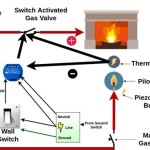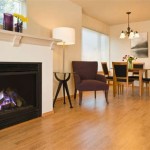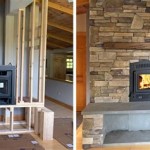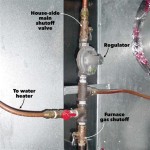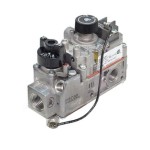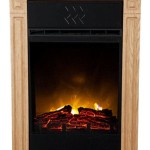The Versatile Appeal of the Two-Sided Corner Fireplace
The two-sided corner fireplace represents a compelling architectural and design choice for homeowners seeking to maximize visual impact and heat distribution within a living space. Unlike traditional fireplaces confined to a single wall, this configuration allows for the warming glow and aesthetic charm to be enjoyed from two adjacent rooms simultaneously. This article will delve into the various aspects of two-sided corner fireplaces, exploring their design considerations, advantages, installation nuances, and key functionalities.
The concept of a two-sided corner fireplace hinges on its placement at the intersection of two walls, creating a focal point visible from multiple vantage points. This positioning offers a unique opportunity to divide and connect spaces, providing both physical and visual warmth across different areas of the home. Whether connecting a living room and dining room, a master bedroom and ensuite, or even an indoor and outdoor space, the two-sided corner fireplace serves as a unifying element.
Design and Aesthetic Flexibility
One of the most significant advantages of a two-sided corner fireplace is its design flexibility. It can be seamlessly integrated into a variety of architectural styles, from modern and minimalist to rustic and traditional. The surrounding materials, such as stone, brick, tile, or metal, can be chosen to complement the existing decor and reinforce the desired aesthetic. The shape of the fireplace opening itself can also be customized, ranging from rectangular and square designs to more contemporary curved or asymmetrical forms. This adaptability allows homeowners to create a truly unique and personalized focal point.
The visual appeal of a two-sided corner fireplace is amplified by the exposed flames, which are visible from multiple angles. This enhances the sense of depth and dimension in the surrounding rooms, creating a more dynamic and engaging atmosphere. The flickering flames also provide a source of ambient light, adding warmth and intimacy to the space. The design considerations extend beyond the physical structure, encompassing the surrounding mantel, hearth, and decorative elements, all of which contribute to the overall aesthetic impact.
Furthermore, the design of a two-sided corner fireplace can influence the flow of movement within the home. It can be used to subtly define distinct zones within an open-plan living area, while still maintaining a sense of connection and continuity. By strategically positioning furniture and accessories around the fireplace, homeowners can create comfortable and inviting spaces that encourage interaction and relaxation.
Installation Considerations and Structural Requirements
The installation of a two-sided corner fireplace requires careful planning and attention to detail. It is crucial to consider the structural integrity of the existing walls, as the fireplace will need to be adequately supported. This may involve reinforcing the framing and foundation to accommodate the weight of the fireplace and its surrounding materials. A professional structural engineer should be consulted to assess the load-bearing capacity of the walls and recommend any necessary modifications.
Another important consideration is the venting system. A two-sided corner fireplace can be vented either directly through the roof or horizontally through an exterior wall. The choice of venting system will depend on the specific design of the fireplace, the layout of the home, and local building codes. It is essential to ensure that the venting system is properly sized and installed to prevent the buildup of harmful gases, such as carbon monoxide. Professional installation by a qualified HVAC technician or fireplace installer is highly recommended.
Building codes also dictate the clearances required around the fireplace. Combustible materials, such as wood framing, drywall, and furniture, must be kept a safe distance from the fireplace to prevent the risk of fire. These clearances vary depending on the type of fireplace, the fuel it uses, and local regulations. Adhering to these clearances is crucial for ensuring the safety and longevity of the fireplace.
Accessibility for maintenance and cleaning is another factor to consider during installation. The fireplace should be easily accessible for routine inspections, repairs, and chimney cleaning. This may involve providing access panels or removable sections in the surround. Regular maintenance is essential for maintaining the efficiency and safety of the fireplace.
Operational Efficiency and Heating Capabilities
The operational efficiency of a two-sided corner fireplace depends on several factors, including the type of fuel used, the design of the firebox, and the quality of the installation. Wood-burning fireplaces are known for their aesthetic appeal and ambiance, but they can be less efficient than gas or electric fireplaces. Gas fireplaces offer greater control over the heat output and are often equipped with thermostats for precise temperature management. Electric fireplaces are the most convenient option, as they require no venting and can be easily installed in almost any location. However, they may not provide the same level of heat as wood or gas fireplaces.
The design of the firebox also plays a significant role in the heating capabilities of the fireplace. A well-designed firebox will maximize heat radiation and convection, distributing warmth evenly throughout the surrounding rooms. Features such as insulated fireboxes, heat-circulating fans, and adjustable dampers can further enhance the efficiency of the fireplace.
The size of the fireplace should be appropriately matched to the size of the rooms it is intended to heat. An oversized fireplace may generate too much heat, making the space uncomfortable, while an undersized fireplace may not provide sufficient warmth. Consulting with a fireplace specialist or HVAC professional can help determine the optimal size and BTU output for the specific heating needs.
Beyond its primary function of providing heat, the two-sided corner fireplace can also contribute to the overall energy efficiency of the home. By supplementing the existing heating system, the fireplace can reduce reliance on central heating, potentially lowering energy bills. In some cases, the fireplace can be used as a zonal heating system, allowing homeowners to heat only the rooms they are actively using. This can be particularly beneficial in larger homes with multiple living areas.
Ultimately, the two-sided corner fireplace offers a unique blend of aesthetic appeal, practical functionality, and design versatility. Its ability to connect and warm multiple spaces simultaneously makes it a compelling choice for homeowners seeking to enhance the visual appeal and comfort of their living environment. By carefully considering the design, installation, and operational aspects, homeowners can create a stunning and functional focal point that will be enjoyed for years to come.

Chicago Corner 40re Designer Gas Fireplace Regency

Result For Two Sided Corner Fireplace With Built In Wood Home Burning
Corner Two Sided Gas Fireplace Heat Glo

Montigo H Series Corner The Fireplace Specialist

Corner Fireplace Insert Visio 2 L Attika Feuer Ag Wood Burning Steel Contemporary

D1000vad Fireplace Corner Double Sided Wood

European Home Evonicfires Tyrell 32 Inch Halo Built In 3 Sided Electric Fireplace Firebox Ev Fp Fireplaces Depot

Double Corner Fireplace Modern

Cheminee Chazelles D1000vag Designer Wood Fireplace Haus Collective

Axis H1200vlg Two Sided Wood Fireplace Heating Cooling Fireplaces Bbqs Mornington

